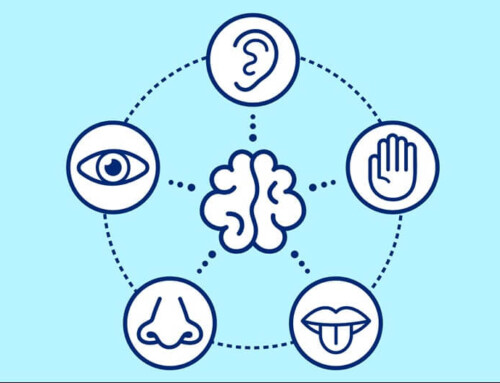Serious gamers have long known a secret. It’s entirely possible to learn, build communities, connect with new people, grow relationships, strategize as a team, and have fun doing it!
Let’s step back for a minute.
There is a reason why some generations played math bingo, completed word finds, navigated strategy mazes, listened to music, doodled, or participated in a categories match in school. It was a learning retention strategy – and it worked. Today, these same methods remain effective, albeit with a more modern twist.
Incorporating gaming fundamentals into virtual learning and team-building efforts can significantly enhance business objectives. The real secret is identifying how to tap the different types of learners that exist!
Contrary to common belief, there are not just a few types of learning – there are seven.
- Visual/Spatial – Learn best through visual concepts.
Tips: They may be doodlers, enjoy watching other people create, focused, very observant, enjoy planning, prefer charts/graphs, and images like notetaking - Auditory/Musical – Learn best by hearing.
Tips: They prefer to listen to recordings (e.g., podcasts, webinars, videos) and replay, enjoy teaching or training others, may enjoy speaking out loud during meetings, etc.. - Verbal – Learn best by both writing and speaking
Tips: They are natural storytellers and intellectuals, but are complex learners as they can be very outgoing or very introverted. - Physical/Kinesthetic – Learn best through hands-on experience
Tips: They are very action-oriented, energetic, be fidgety (e.g., shaking a foot, drumming fingers, rolling pencils across fingers, etc.) Incorporating opportunities for movement and engaging in role-play activities are the most effective. - Logical/Mathematical – Learn best through problem-solving
Tips: They prefer logical learning through patterns, classifications, numbers, and learn best with processes that incorporate clear systems, methods, and planning. - Social/Interpersonal – Learn through observation and imitation
Tips: They are often good communicators, demonstrate empathy, gravitate toward groups, and desire collaboration, finding doing and sharing equally rewarding. - Solitary/Intrapersonal – Learn through self-reflection and independence
Tips: They may fit a variety of different overall learning styles, but are very independent, lone-rangers who prefer to work on their own, as they are very private. Providing additional materials, resources, and tools is extremely valuable to solitary learners.
Why Games Matter
Games trigger brain activity that overlaps several of these learning styles, making them an excellent option for organizations of all sizes. This type of approach is especially crucial for virtual workforces, meetings, and events, as it is a great way to keep employees or audiences engaged and track their engagement levels, identifying who is paying attention as information is disseminated.
Game Changer
While many organizations were forced to transition their workforces to remote work during the COVID-19 pandemic, the gaming world has been dealing with virtual interactions and team-building for many years. After all, video games are by their nature remote. Yet gamers – even those in different parts of the world who never meet in person – often build strong bonds with each other. How and why does this happen?
Video games are not always easy to win, but they are generally easy to learn and use overall, and this also applies to the equipment used to play them. Both the console and the controller tend to remain simple regardless of how complex gaming technology has become. The ability to focus on the experience of playing the game, rather than struggling to master the equipment, allows gamers to conserve their energy for the enjoyable task at hand.
When planning virtual events or managing a remote workforce, companies should ensure that the technology and programs used are easy for attendees and employees to navigate. Their focus should be on the key tasks at hand.
Immersive Experiences
Video games leverage behavioral tools such as thrilling twists and turns in plotlines. Furthermore, they engage players fully in the game through tasks they must accomplish, points they can earn, and the option to compete against other gamers. These ingredients create deeply immersive experiences that keep players engaged and captivated.
The more involved employees or audiences get in the experience of working together or attending the same event, the better their chances of learning and team building. Sparking healthy competition and collaborating on tasks will stimulate those involved and hold their attention.
The Future Is Here
In the event space, virtual meetings, conferences, and trade shows will soon resemble in-person events, although they can never fully replace them. Attendees can interact with presenters, other attendees, and exhibits via imaginative environments brought to life by augmented and virtual reality technologies.
When it comes to ease of use, positive changes are on the horizon for technology. Experts in the event space anticipate the customization of technologies to the interaction preferences of attendees. Additionally, attendees will have more options, including the choice of how, when, and with whom they participate. The modes by which attendees access virtual events will include their computer, smartphone, augmented reality, and virtual reality.
In the meantime, employers and event planners can use the following ideas to help encourage learning and team building among remote workforces and attendees:
- Present a sentence with one word missing and ask each person to provide a word to complete it.
- Send a current news story to the group to read, allow each person one minute to share their thoughts on it, and reserve five minutes at the end for an open discussion about the topic at hand.
- Assign mystery, physical, mental, and skill challenges to the group to complete. (Bonus points if you can tie this into an actual problem your business is encountering!)
- Host a virtual happy hour for each team, capping the event at 15 to 20 people to foster engagement.
- Provide opportunities for smaller break-out sessions and mixers so people can get to know each other better, build stronger connections, and challenge their growth.
- Play a game of Pictionary as an icebreaker.
- Ask each participant to bring one object to the virtual event and show it to everyone in the meeting. Assign the task of using all the objects to build something, describe what it does, etc.
- Build a storyline where one person starts the story and someone else keeps adding on to it by adding one more sentence.
Gaming offers a great deal of insight for capturing and retaining the attention and interest of remote employees and virtual event attendees. Incorporating just a few of these strategies will significantly increase their chances of generating the return on investment and results companies want.
Contact Gavel International to be inspired by solutions that connect and engage your people.
This article was last updated on June 10, 2025






